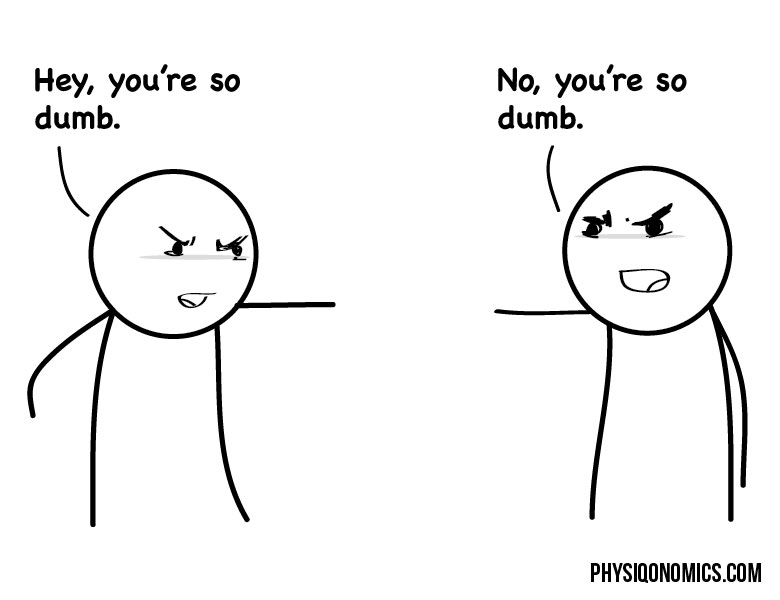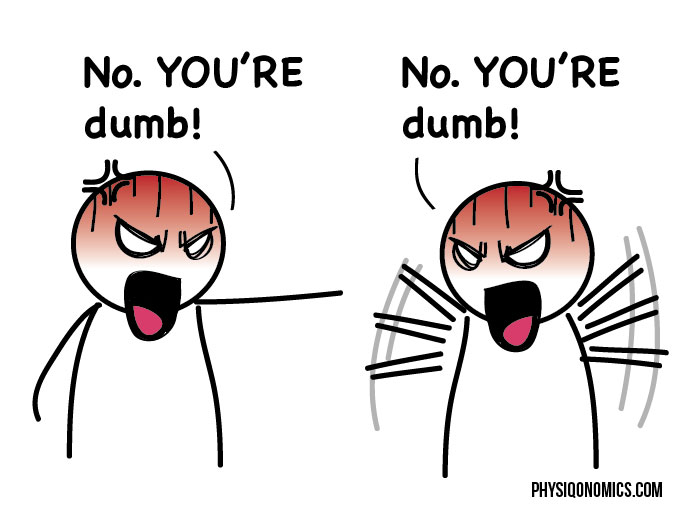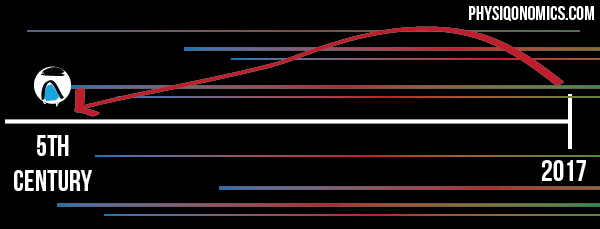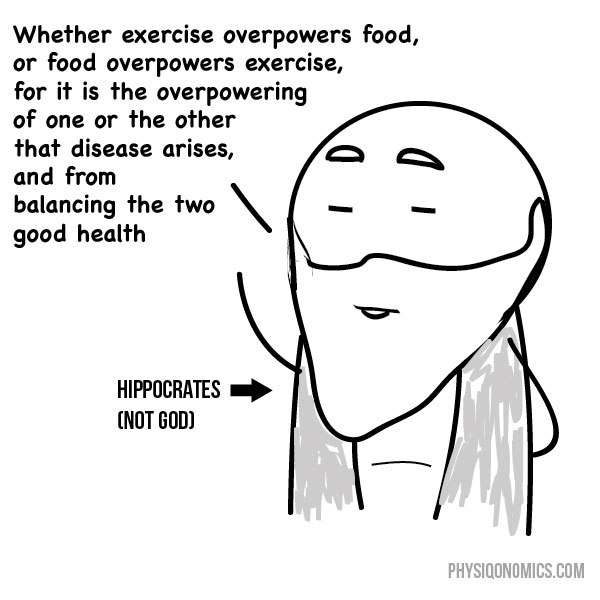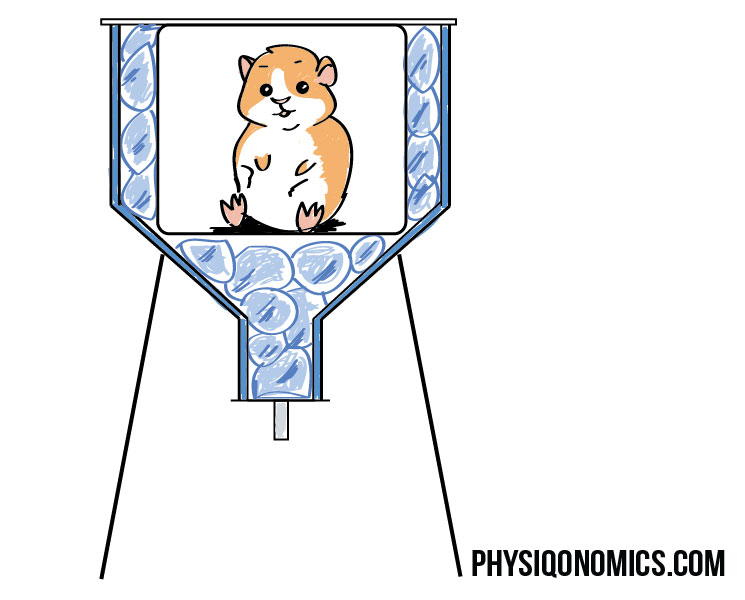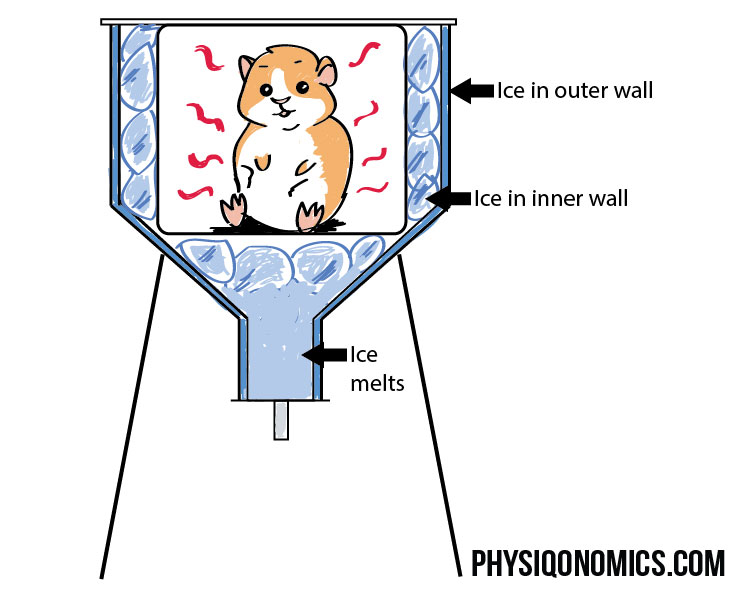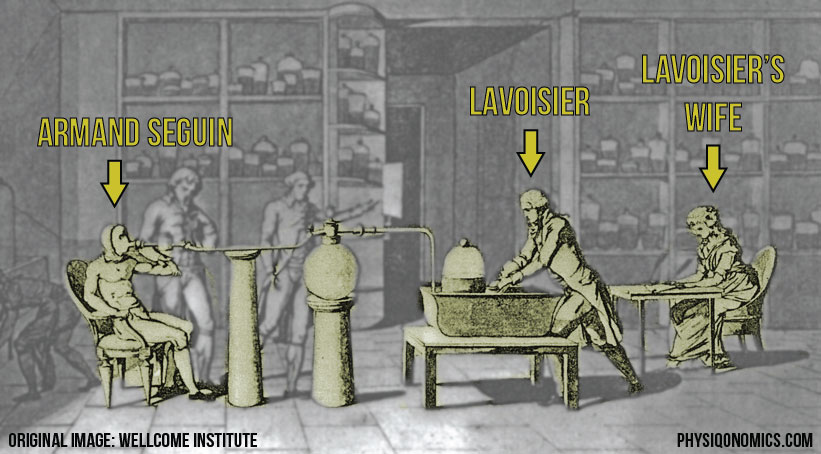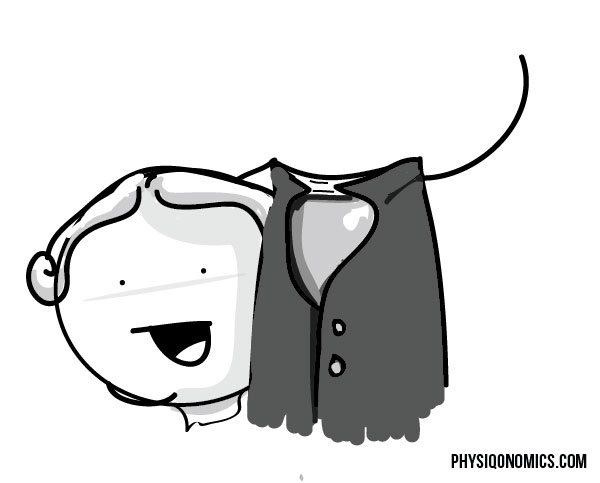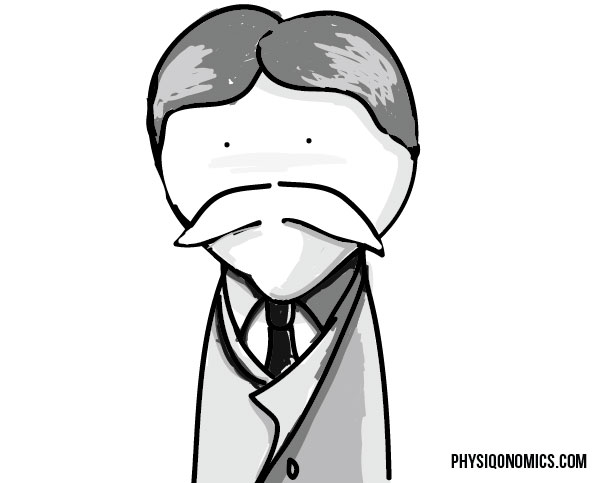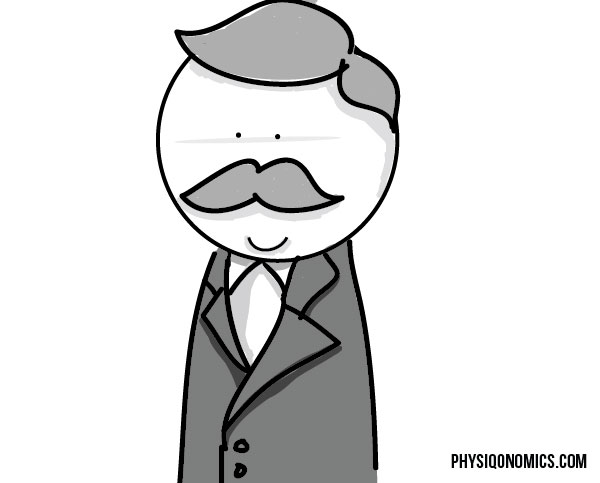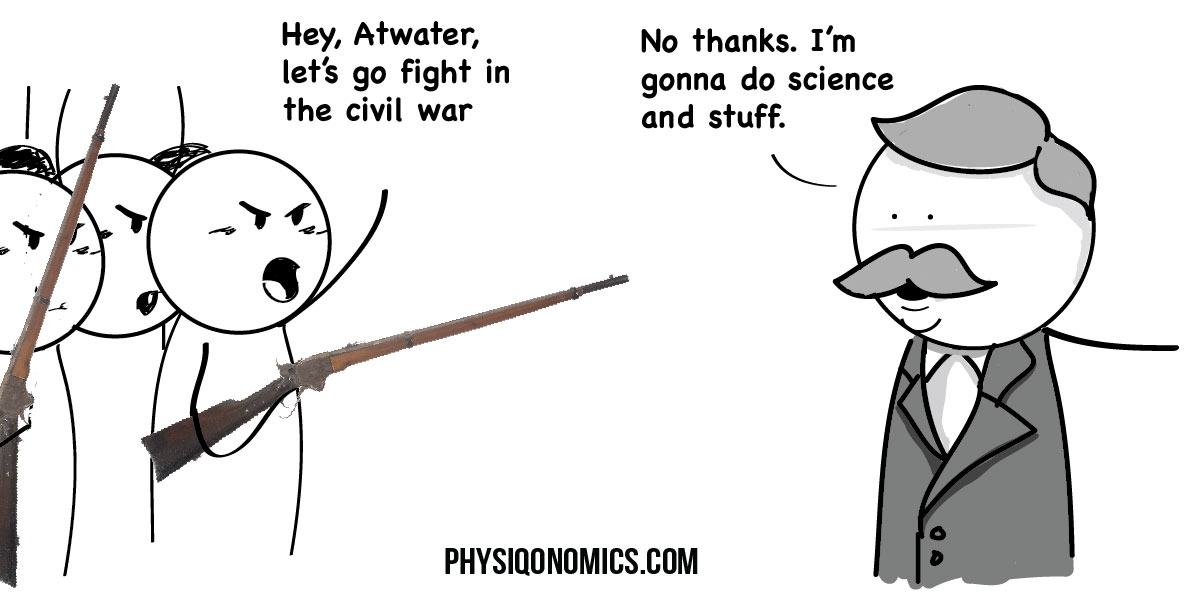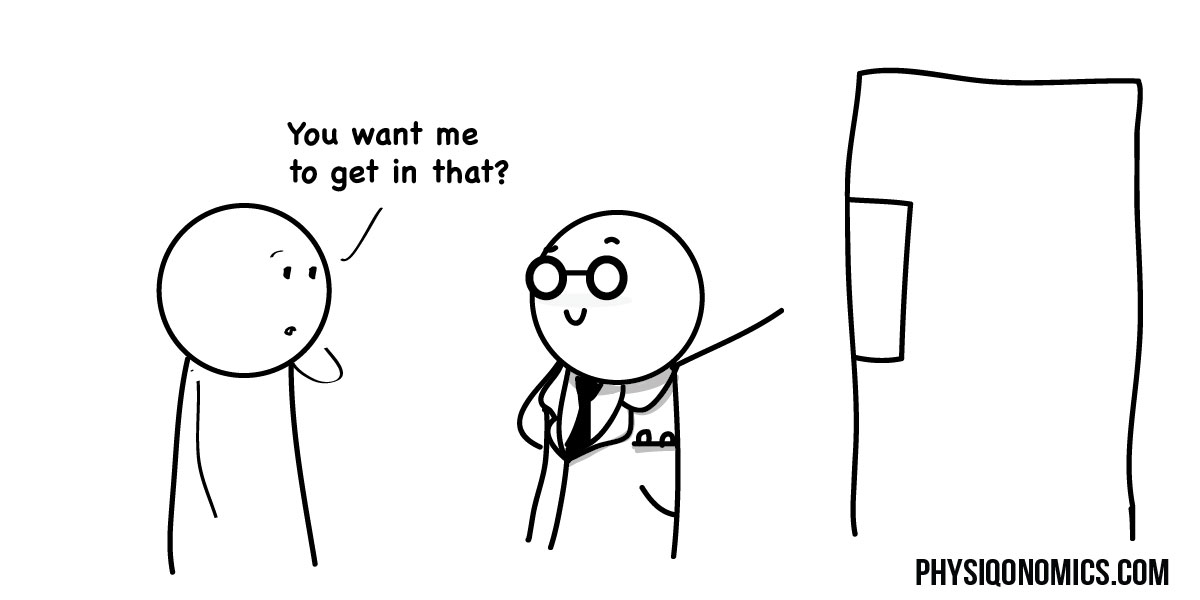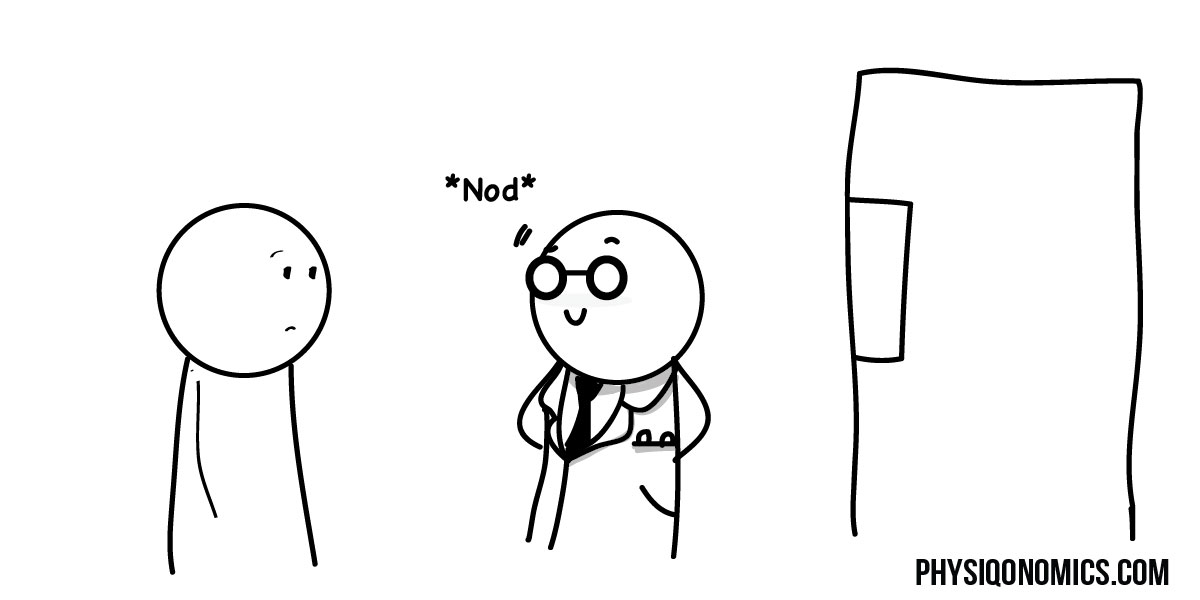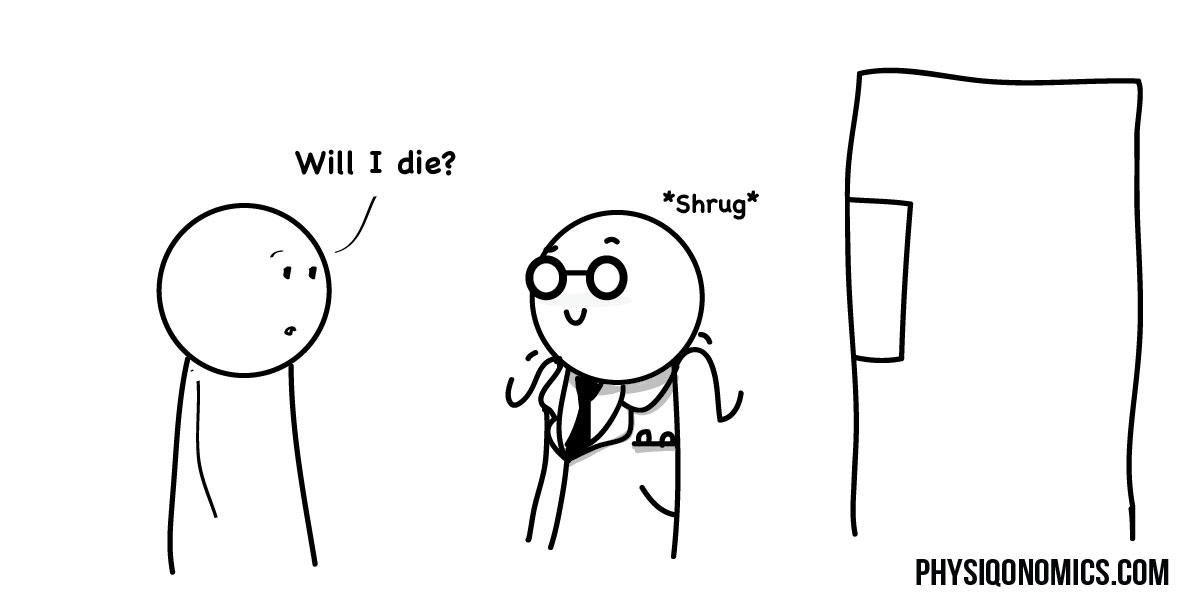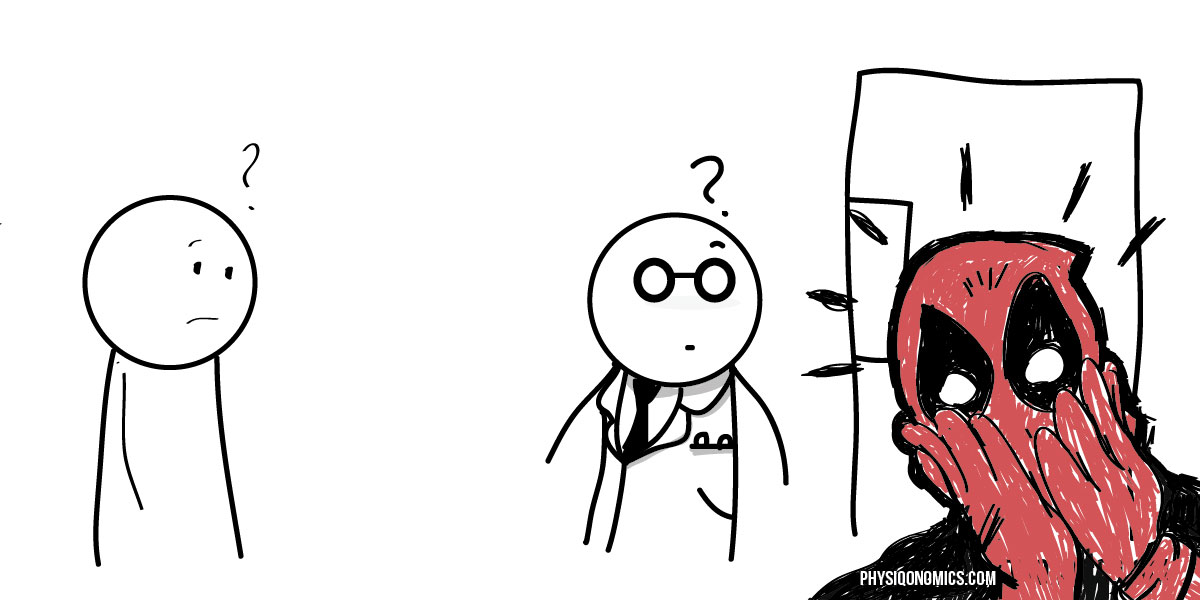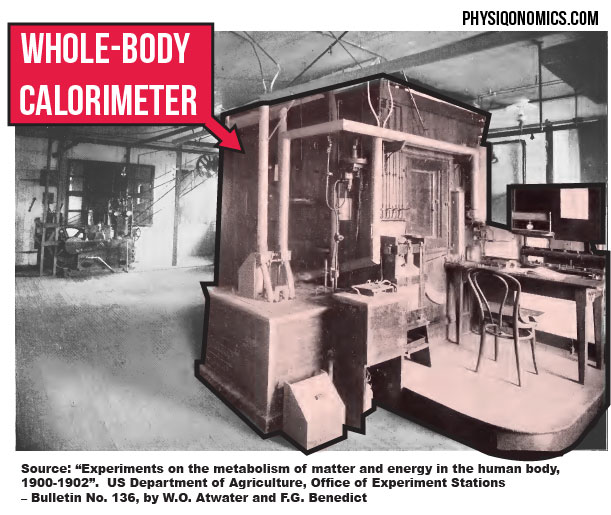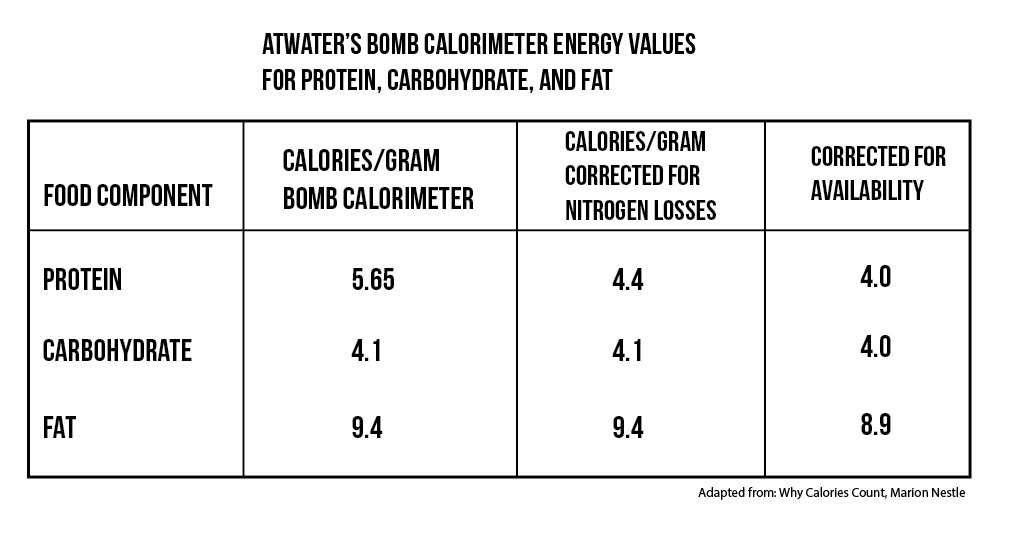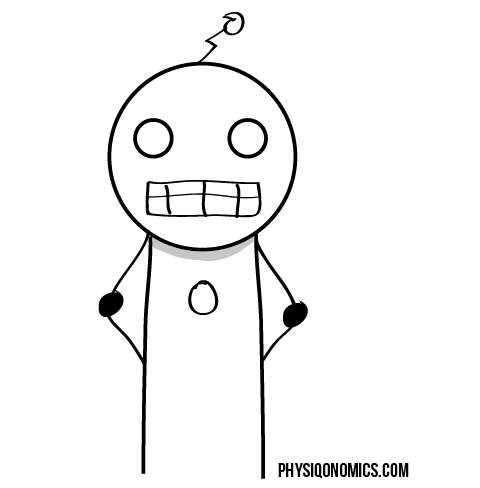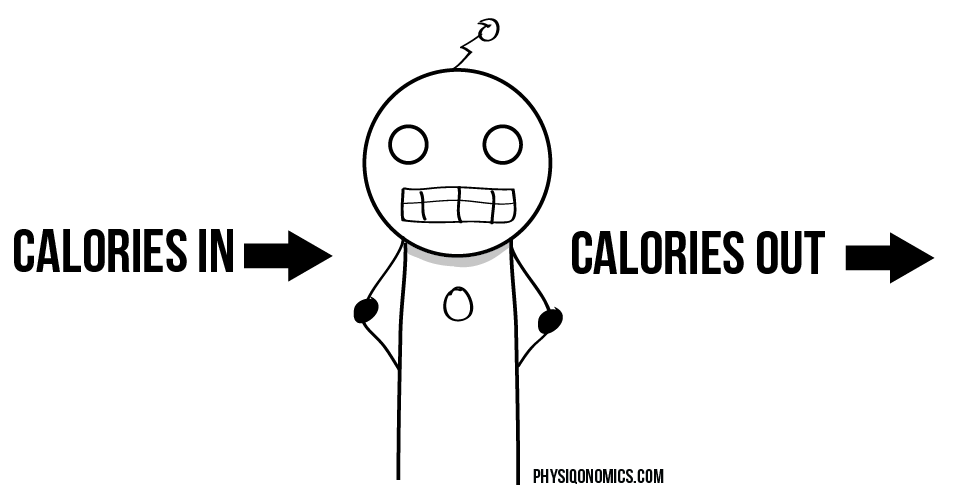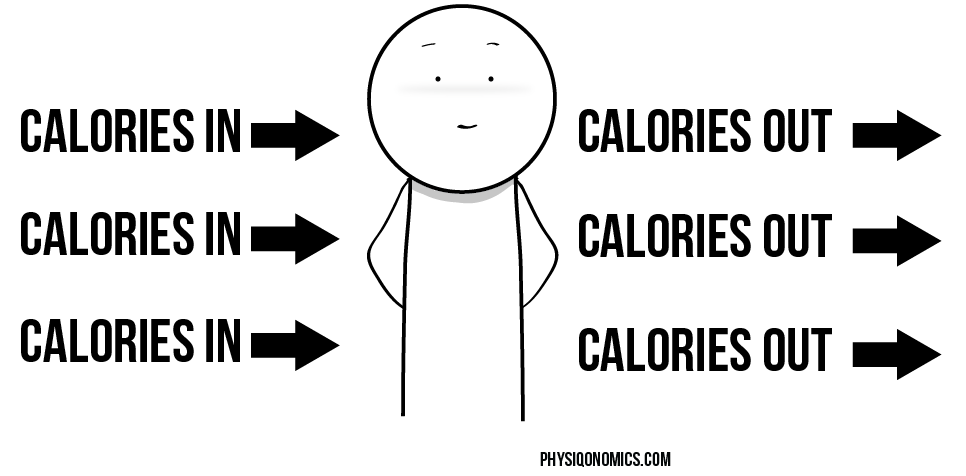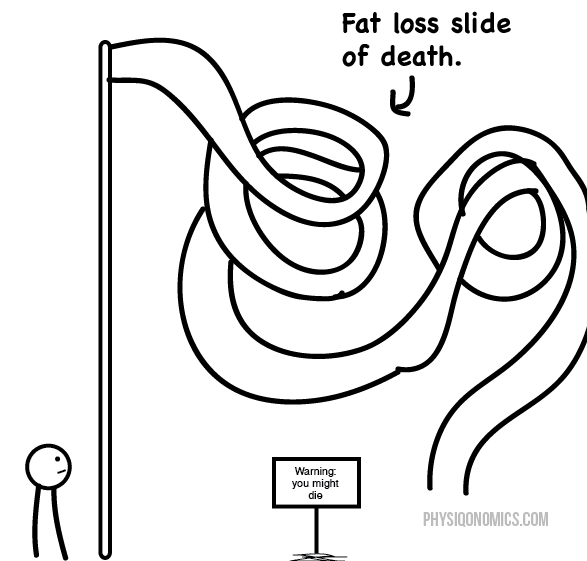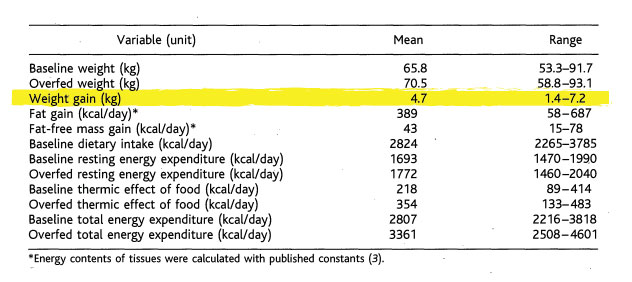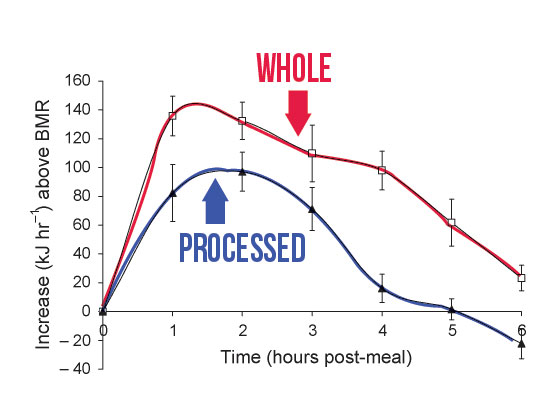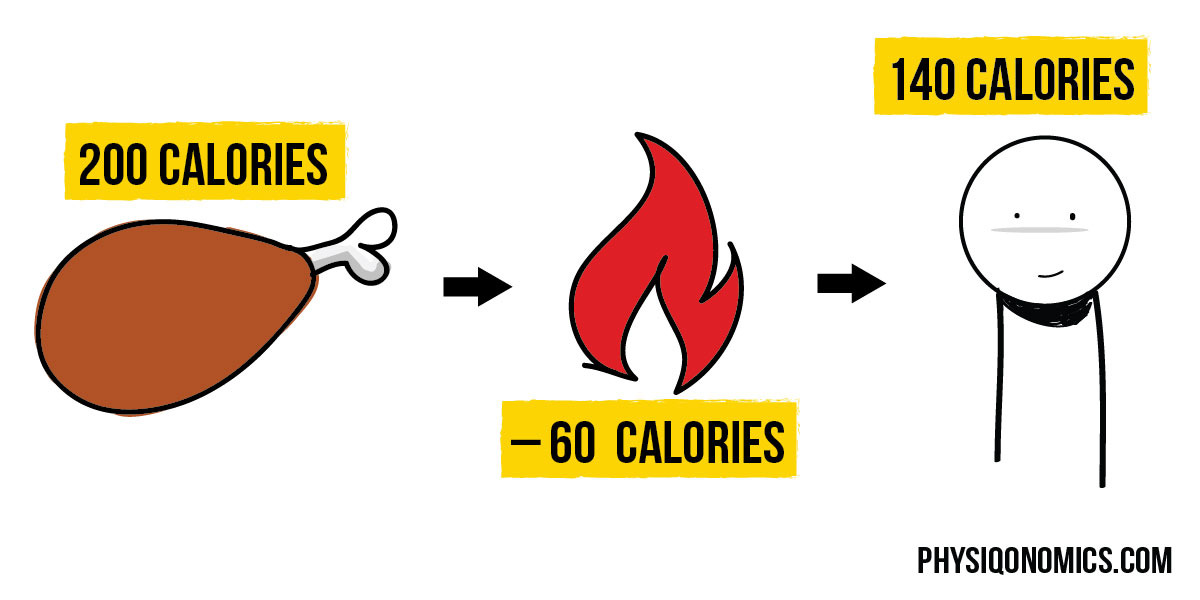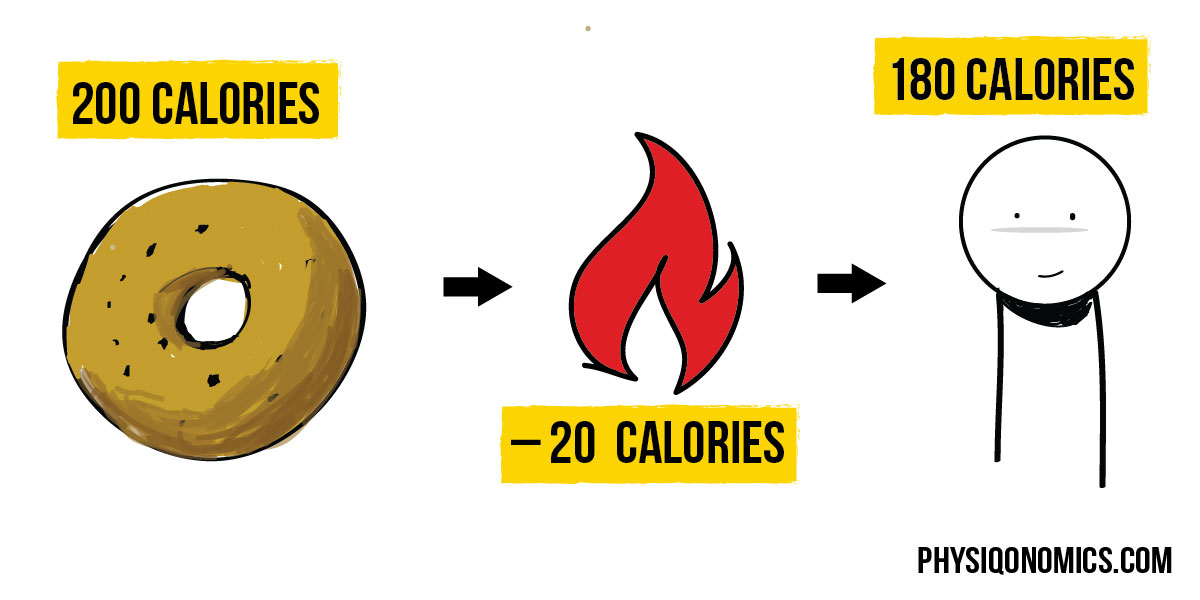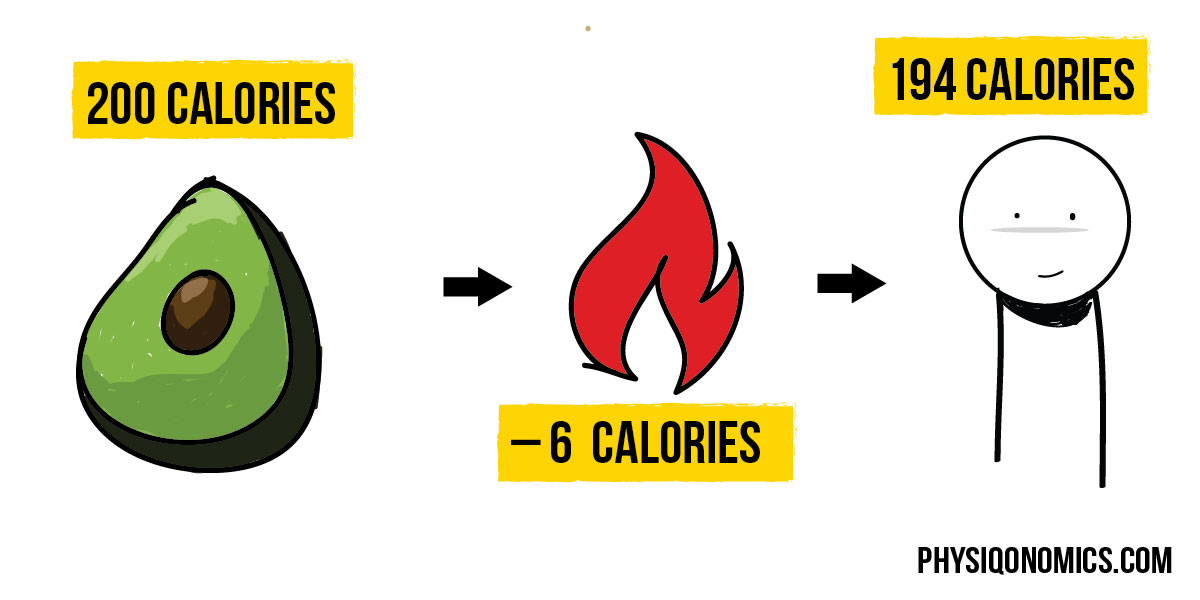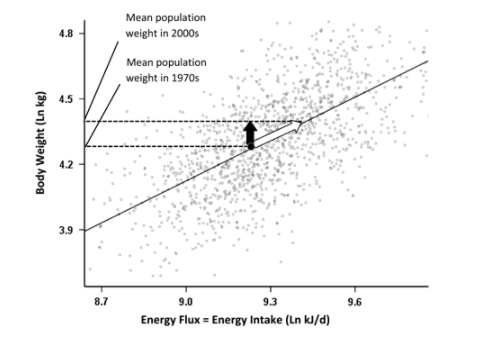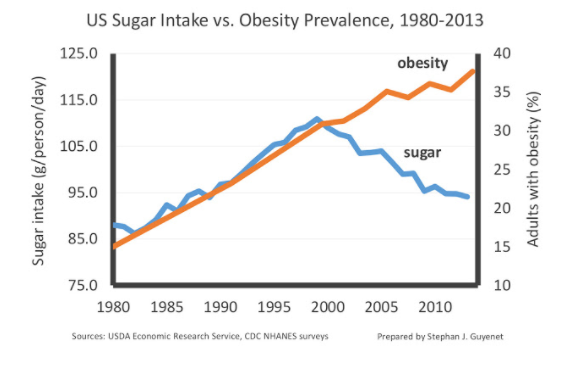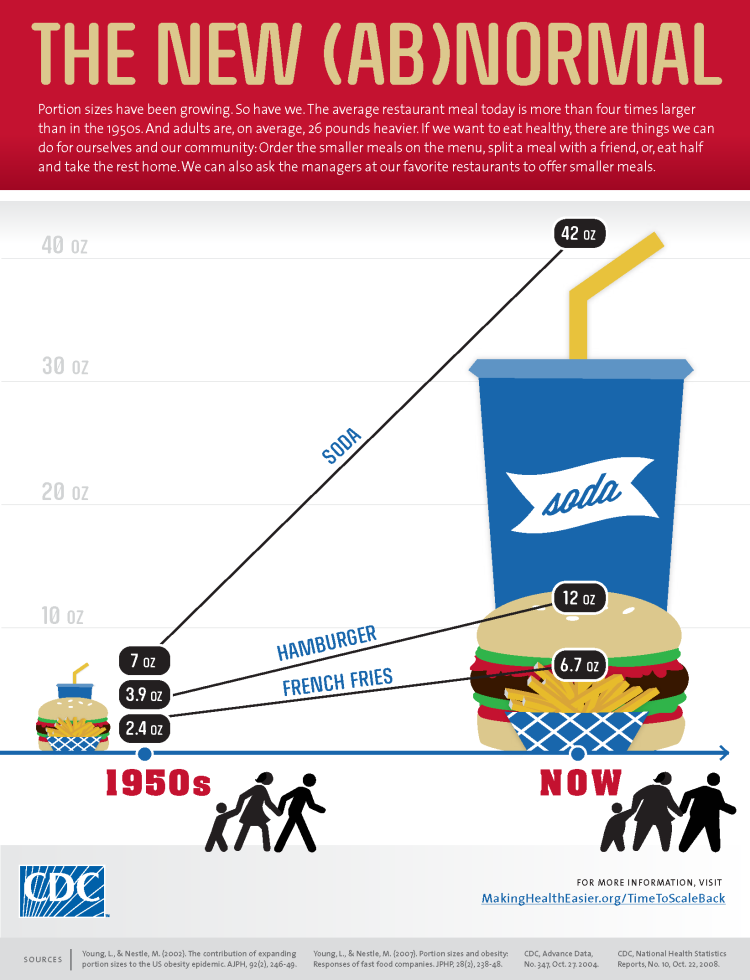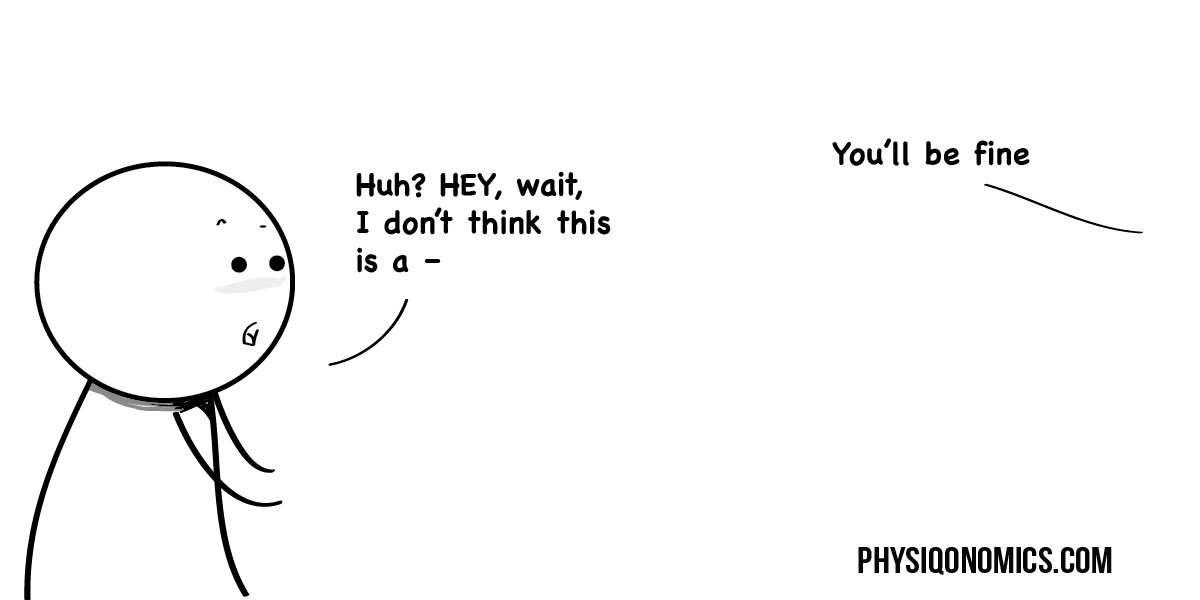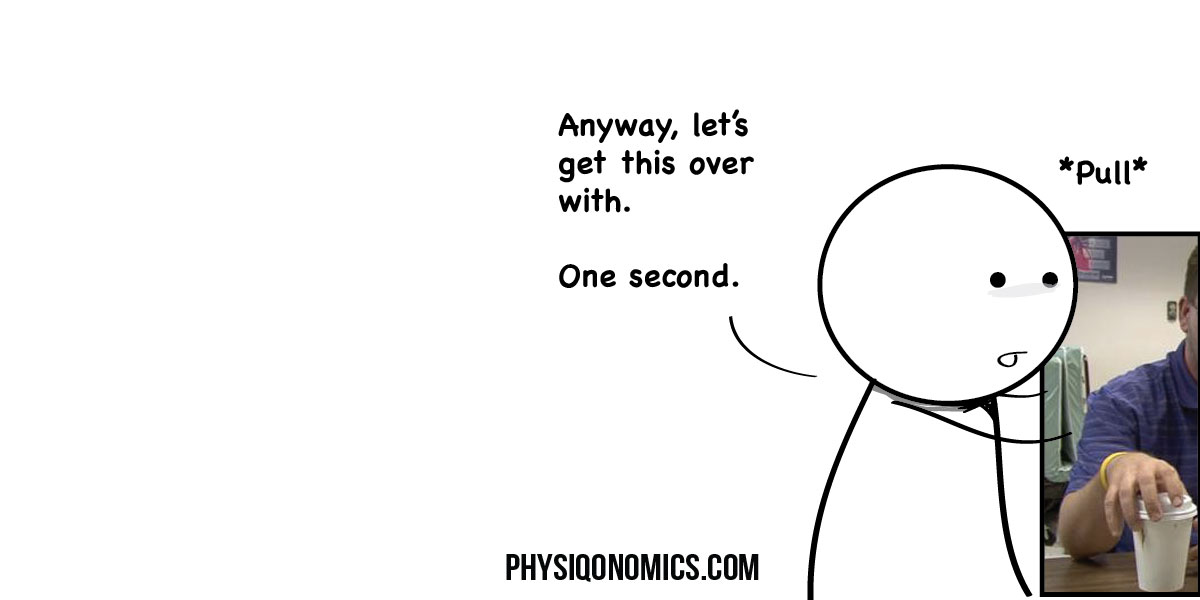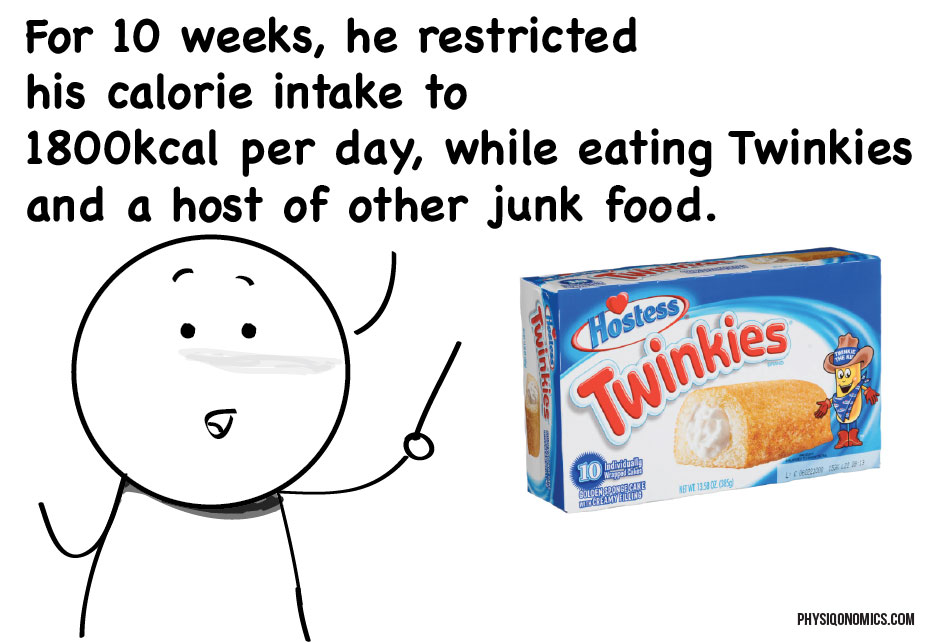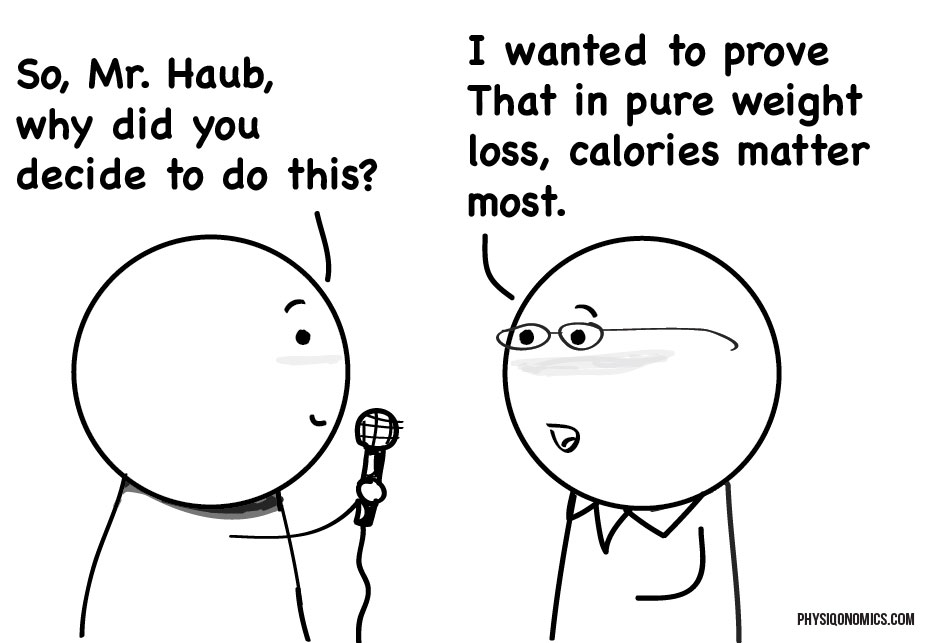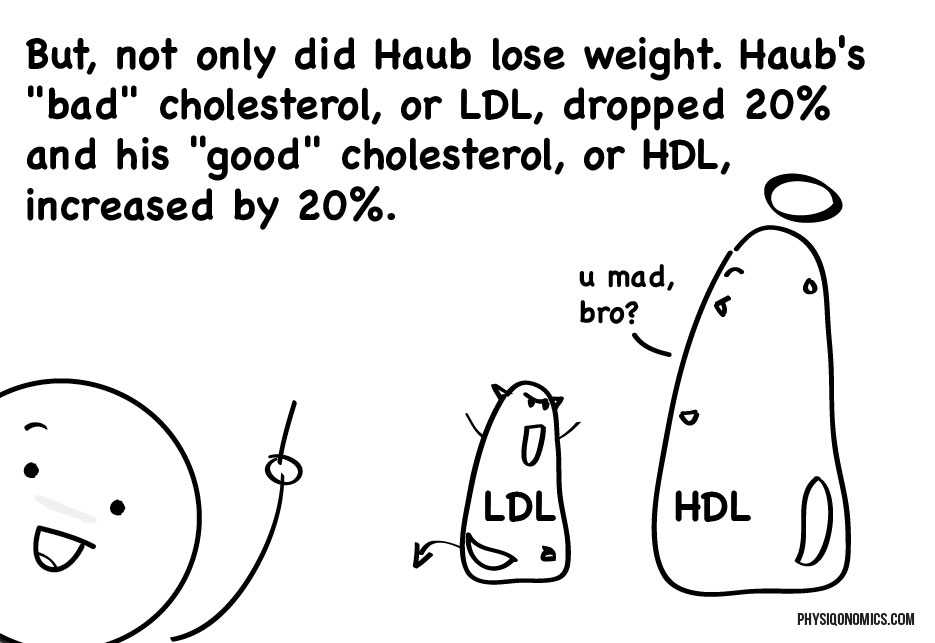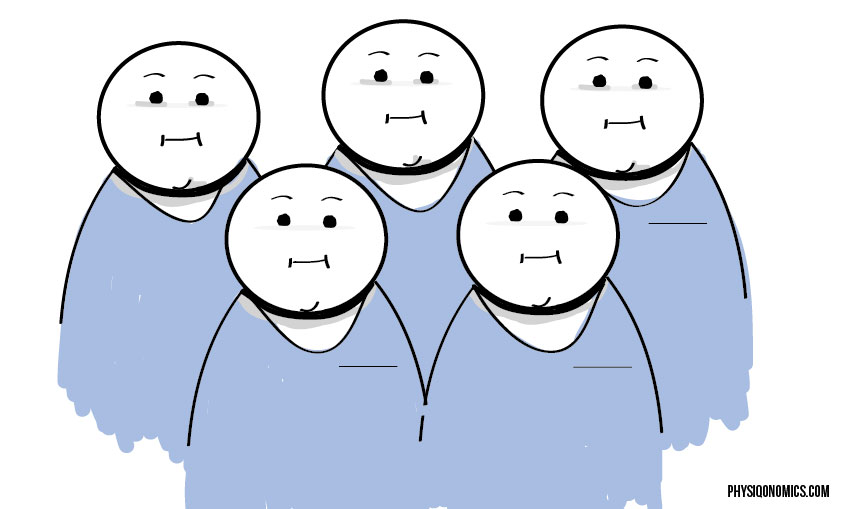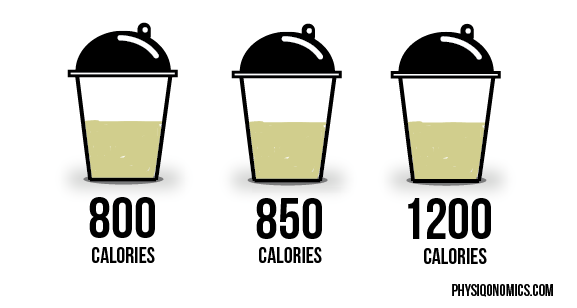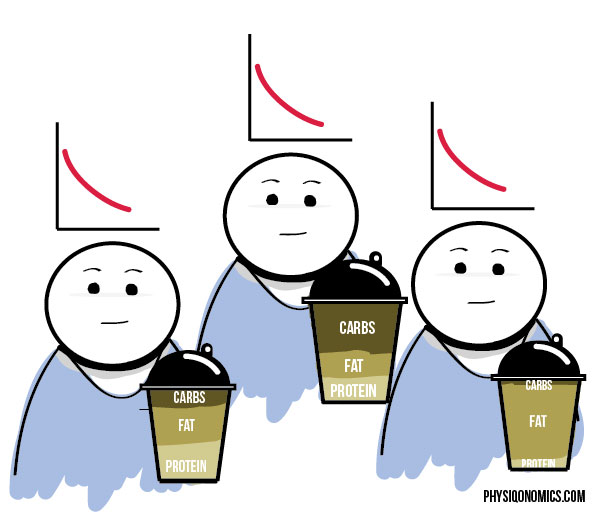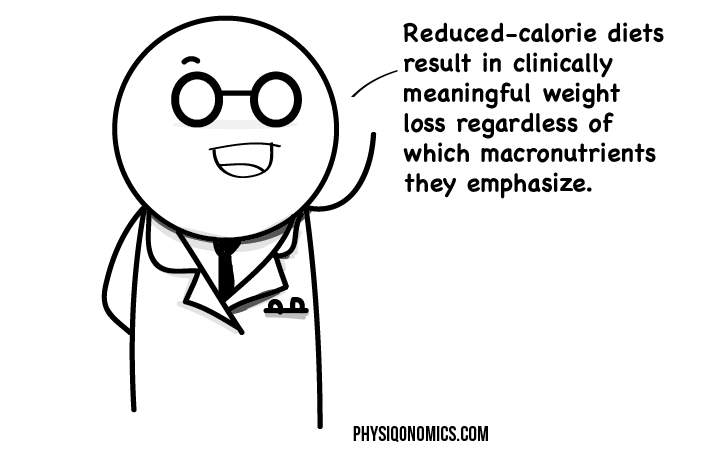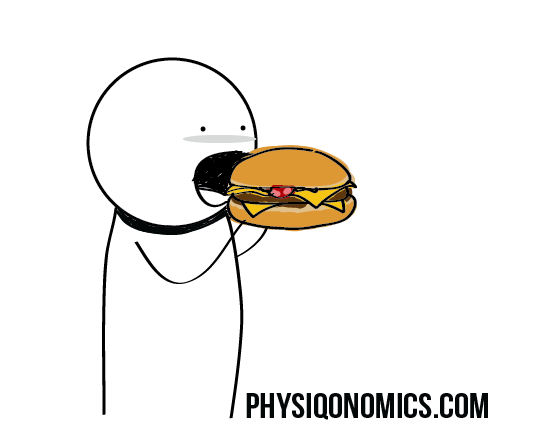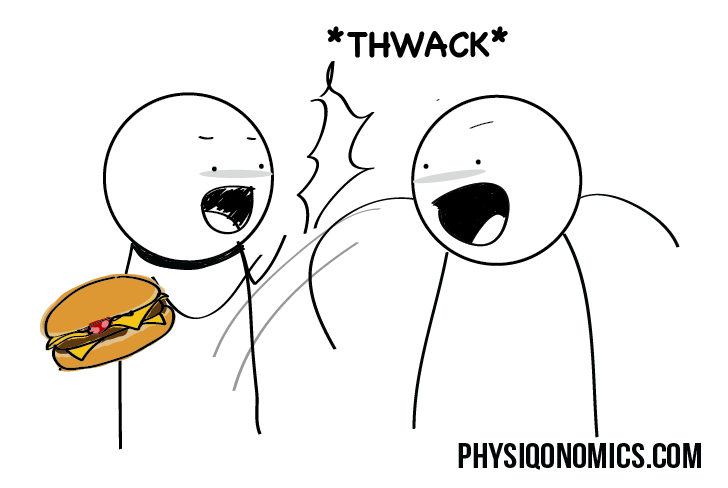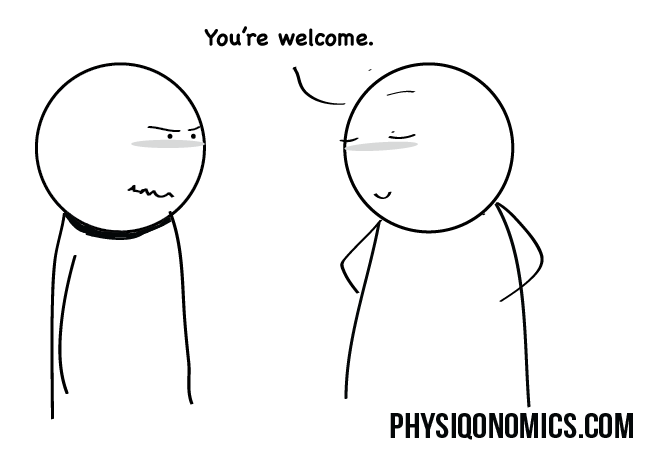Notes from Aadam:
Camp 1:
Then there’s Camp 2:
And then they do this:
Then there’s a third camp. Those who, like me, believe that both of the other camps kinda, sorta, have a point and should calm down.
But, we’ll get to that in a bit. First: what actually is a calorie?
What we talk about when we talk about calories
The word calorie comes from the Latin word, calor, meaning heat. And that’s what calories are: units of heat or work. Or, to be more precise – “The approximate amount of energy needed to raise the temperature of one gram of water by one degree Celsius”. The key word here is energy. Calories can be used to measure all types of energy in chemistry, and when we refer to food calories, we use the term Kilocalories or Calories (capital C).
While the Calorie is common in today’s lexicon, it wasn’t always like this. And to fully understand the calorie argument, it’s important to understand how we arrived at the modern day iteration of ‘Calories’. To do that, we have to go way back. No, like – waaaaaaay back.
Calories: The (very abbreviated) Origin Story
We can actually trace the first mention of calorie balance and body weight to around the 5th century, when this guy…
What was that? No, that’s not God, silly. It’s Hippocrates – the Greek Physician and father of modern medicine 2. As I was saying, Hippocrates was espousing the idea of energy balance way before all you cool kids were.
Ok, enough showing off Hipp. Jeez – we’re moving on.
Fast forwarding a few more centuries and we enter the Age of Enlightenment, and this was when the scientific method and reason became the modus operandi.
The first of which starts with the Father of Modern Chemistry, Antoine-Laurent Lavoisier.
Born to a family of rich lawyers in Paris in 1743, Lavoisier was a French aristocrat who set the stage for our understanding of the body and calories; namely, respiration and metabolism. A tax collector by day, he spent his evenings involved in science research and experiments.
Seeing as Lavoisier was, you know, significantly rich he could afford to have various apparatuses built to help him with his research, amongst these was the first calorimeter: an apparatus for measuring the amount of heat involved in a chemical reaction.
Lavoisier’s Guinea Pig
In 1780, Lavoisier conducted the first of his experiments that quantified the role of oxygen and metabolism. He placed a guinea pig into a cage that was placed inside a double-walled container.
There was ice in the outer wall – maintaining a constant temperature – and ice in the inner wall. The heat from the guinea pig melted the ice in the inner wall.
The melted ice – that was now water – would drip down through a plug at the bottom of the calorimeter where a bowl would collect it. This led Lavoisier to believe that energy came from oxygen turning to carbon dioxide and heat – or, respiration.
Lavoisier also believed in the conservation of mass – matter was neither created nor destroyed, but, like all savants, he was way ahead of his time and lacked the resources to prove this to any significant length. Unfortunately, soon the French Revolution began and the revolutionaries were all, “Hey, rich tax collector, dude, we want our money back so we can eat”, and well, Lavoisier was beheaded. I know, sad.
OK. We’re moving on.
Julius Mayer and The First Law of Thermodynamics
In June 1841, at the age of 27, German physician and chemist Julius Von Mayer published his first scientific paper, “Remarks on the Forces of Nature”, in which he determined that living systems conformed to the first law of thermodynamics: energy can be neither created nor destroyed, only change forms.
This law also explained how the metabolism transformed food energy (calories) into heat energy for use by the body or if it wasn’t used, stored as fat.
It was also around this time scientists began to develop bomb calorimeters to measure the energy value of food.
Max Rubner: “A Calorie is a Calorie”
Max Rubner was born in Munich in 1854 and In his early twenties he trained under Carl Von Voit who had begun studying respiratory exchanges in humans.
By 1889, Rubner had built a remarkably accurate bomb calorimeter which lead to many of his findings, most notably: the thermic effect of protein, the energy laws of physics applying to caloric balance, and his most fundamental finding that a calorie is a calorie.
“The three major foodstuffs, carbohydrates, protein, and fat can replace each other in accordance with their heat-producing value”, he wrote. He termed this “The Isodynamic Law”.
Rubner was the first person to measure the caloric value of protein, fats, and carbohydrates. Rubner also noted that unlike the bomb calorimeter, the human body wasn’t able to metabolise nitrogen from protein, and these calories were excreted through urine. After several experiments, correcting for urinary nitrogen losses, he finally arrived at these values.
While Rubner was on the right path, he didn’t have the equipment or the methods to advance his findings any further.
A decade later, a scientist from the other side of the world would build on his findings and establish the calorie we know today.
Atwater and the Modern Day Calorie
Wilbur Olin Atwater was born in 1844 in New York. By the time he was an undergrad, the Civil War had started. Atwater didn’t enlist, opting instead to pursue a degree in agricultural chemistry.
By 1869 he’d earned his doctorate and established a food analysis laboratory at Wesleyan University. Around this time, European scientists had begun building whole-body calorimeters, large enough to house people.
Atwater caught word of what the Europeans were doing, and in the early 1880’s travelled to Europe to work with these researchers and see what all the fuss was with these calorimeter machines.
One of these researchers happened to be Max Rubner. Atwater soon learned how to use whole-body calorimeters for performing energy balance studies in humans and, after two years in Europe, returned back to the US.
By 1895 Atwater had completed building his own whole-body calorimeter and began a series of experiments.
The whole-body calorimeter could house a human volunteer for several days, allowing Atwater to measure the human metabolism by having volunteers perform physical activity and then analysing the heat produced. Using this information he was able to quantify the metabolism and the balance between food intake and energy output 5.
In 1899, Atwater published calorie values for protein, carbohydrates, and fats. Building on Rubner’s work before him, Atwater noted that calories were also lost to digestion. He corrected for these losses and arrived at what we now call The Atwater Values 6
As a testament to the quality and diligence of Atwater’s work, we still use the 4-9-4 Atwater values on food labels today – almost 120 years after he’d originally derived them.
WHEW. What a ride, huh? So that’s how we arrived at the modern day iteration of calories, the calorie counts you see for carbs, fats, and protein on food packaging today, and the idea that the first law applies to the human metabolism.
But, there’s a slight problem. Shit’s a little more complicated than that.
The Part Where I Explain Why Shit’s a Little More Complicated Than That
When Atwater established the calorie values, he wanted to represent the available, or, metabolisable energy, i.e. the calories available to the body for use after correcting for calorie losses via undigested and excreted calories. Atwater could then use these values to predict the number of calories people ate in a day.
For example, if a food item contained 30g of protein, 40g of carbs, and 20g of fat, using the Atwater values he could estimate the total calorie count of the food item to be ~460 calories.
Atwater’s goal with all this work was to determine an effective diet that could meet the nutritional needs of the people at the time and establish a scientific standard of living. 7
Even though Atwater noted, “one chief cause of corpulence is overeating”, or: you’re gaining fat because you’re eating too much, body weight regulation wasn’t Atwater’s goal. 8
Which finally brings me to my gosh darn it point: Remember in this article when I told you that calories in, calories out was kinda super complicated? And then I drew that amazing hamburger that nobody complimented me on?
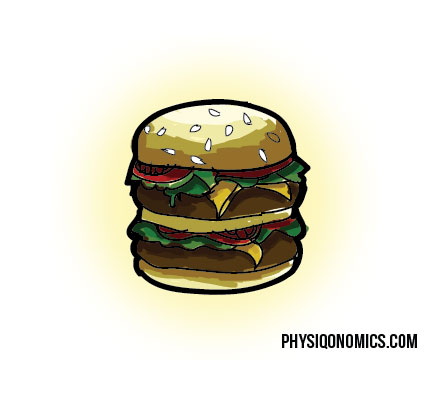
You can compliment me here
Well, that’s what I’m expounding on now. Yeah, expound, because I’m fancy.
This is you.
And this is Android you.
Both the real you and Android you require a certain number of calories to stay alive and function. However, while both of you require the exact number of calories, the way those calories are processed will differ.
Android you:
Android you is a machine, like a bomb calorimeter, and the number of calories your mechanical twin consumes will equal the number of calories it burns. Ergo: calories in = calories out.
But, the human body isn’t a machine, and so, calories in/calories out is a bit more like this:
There are a lot of factors – internal and external – that explain why calories in doesn’t equal calories out as efficiently in the human body as some people believe.
And that’s what we’re looking at next.
The Complexities of Calories In and Calories Out
• Your body kinda hates math
Back in 1958, scientist Max Wishnofsky wanted to quantify the number of calories it would take to put a person into a calorie surplus or a calorie deficit. So he did a bunch of experiments and concluded that a pound of fat contained 3500 calories. And if someone wanted to lose a pound fat, they’d have to create a weekly calorie deficit of 3500 calories, or, 500 calories per day 9
Fast forwarding to recent times and Wishnofsky’s 3500 calorie rule still pervades mainstream fitness lore: to lose – or gain – a pound of fat you need to burn (or consume) an extra 3500 calories a week, or 500 calories per day.
Unfortunately, there’s a problem. The 3500 calorie rule assumes that fat loss is kinda like this:
When it’s actually more like this:
As you start to lose weight, a number of adaptive mechanisms kick in that try to stop you – all of which I wrote about here. So please go read that because I’ve written about the topic so much that any time it’s brought up the urge to smash my head against a brick wall intensifies. And it’s these adaptations that throw a wrench in the 3500 calorie rule – people don’t lose exactly the amount of weight predicted. As researchers in this review pointed out,“ …the 3500-kcal rule predicts that a person who increases daily energy expenditure by 100 kcal by walking 1 mile (1.6 km) per day will lose more than 50 lb (22.7 kg) over a period of 5 years, the true weight loss is only about 10 lb (4.5 kg), assuming no compensatory increase in caloric intake, because changes in mass concomitantly alter the energy requirements of the body.”
The Black Box of Counterargument:
While the 3500 calorie rule may not work in the long-term – due to metabolic adaptation – it definitely works as a starting point. If you create a calorie deficit of 500 calories per day, you will begin to lose weight.
• People respond differently to over and underfeeding
When you overfeed people, some gain more weight and fat than others.
In one study, researchers overfed 16 healthy human volunteers by 1000 kcal/day over their maintenance intake. You’d expect them all to gain an equivalent amount of weight. But they didn’t – here’s a table of the results.
I’ve highlighted the weight gain row. Take a look at the last column, titled ‘Range’: some people gained 1.4kg and others gained up to 7.2kg after they were overfed the same number of calories.
A similar thing occurs when you overfeed identical twins: one twin gains more fat than the other 10
I know: what the fizzurp?
There are a lot of factors that happen beyond our conscious control. One of these is the impact on NEAT: even when overfed, some people don’t move around as much as others.
The Black Box of Irony:
People use this argument to denounce CICO, but, paradoxically, it only confirms it: when people move less they gain fat compared to those who move more.
• Cooking and Processing
Cooking and processing food changes the number of calories available to the body. Richard Wrangham, author of, How Cooking Made Us Human, has carried out a number of experiments exploring this. 11
In one interesting experiment, rats were fed either raw peanuts or peanut butter.
The raw peanut rats lost significantly more weight than the peanut butter rats. Wrangham noted cooking loosened the structures of the cell walls that bind energy in food, making it easier for digestive enzymes to access more calories. 12
Here’s a cool microscopic image showing this:
The same thing happens with meat: a hamburger patty, for example, will provide more usable calories than a steak; this is evident in how easy it is to eat a burger patty compared to a steak which requires considerably more chewing. 13
Let’s look at one more example.
In 2010, researchers compared the effect of whole and processed foods on the thermic effect of food – the amount of energy your body uses during digestion. Take a look at this graph from the study (the blue and red edits are mine).
The whole food meal required almost double the amount of energy to digest. 14
This is why two meals could have an equivalent number of calories, but the calories left for use and storage after digestion can differ greatly.
• The Macronutrients
The macronutrients – carb, fat, and protein – each have different effects in the body.
The most obvious being the differing caloric values: Carbs and protein have 4 calories per gram, while fat has 9 calories per gram. Meaning 10 grams of carbs and protein contains 40 calories, whereas 10 grams of fat contains 90 calories.
The Black Box of Counterargument:
People use this to refute that a calorie is a calorie – nope. Sorry. Sure, fat is more calorically dense than carbs and protein, but when total calories are matched for: people lose weight; despite the macronutrient composition of the diet. More on this later.
Storage: Carbs are seldom – if ever – directly stored as body fat, while dietary fat is.
Jose Antonio has shown a similar thing occurs with protein. He had participants consume 800 calories of protein over their maintenance needs and found, “consuming a hypercaloric high protein diet does not result in an increase in body fat”. 15
– TEF: The thermic effect of food is how much energy the body uses digesting and storing the food you eat. Each macronutrient has a different thermic effect 16
- Carbs: 5-10%
- Protein: 20-30%
- Fat: 0-3%
Protein has the highest thermic effect of all three macronutrients and this is one reason why when people are overfed protein they don’t gain exactly the predicted amount of weight – a lot of the calories are lost to heat during digestion.
For example, eating 200 calories of protein means you’ve lost 60 calories to TEF; so your body only has 140 calories available of the 200 you consumed.
Compared to eating 200 calories from fats or carbs. The TEF of carbs will leave your body with a useable 180 calories.
And 194 calories from fats.
This is why you can eat two meals of an equivalent caloric amount, but depending on the macronutrient composition of the meals, the number of calories left for use (and storage) by the body after digestion can vary.
The Black Box of Clarification:
While the TEF of the individual macronutrients differs, for a mixed meal – one that contains proteins, carbs, and fats – the thermic effect of food is around 10%
• Calorie counts on restaurants and food labels aren’t always accurate
The calorie counts on food labels and some restaurants aren’t always 100% accurate 17 18 19
With all of that said, Calories are still of the highest importance.
Yes. The law of thermodynamics may not be the most efficient process when applied to the human body – for the plethora of reasons I just noted – but it still applies. And calorie balance counts. More than anything else. Because, as I’m about to show you, when people consume more calories they gain weight and when they eat fewer calories they lose weight.
-
Calorie Increases = Body Weight Increases
When we track calorie and body weight data from as far back as the 1970’s – roughly when the obesity epidemic began – there’s an eery correlation.
In 2009, researchers wanted to determine how increased energy intake and reduced physical activity was contributing to the US obesity epidemic.
To do this, they took calorie data from 1970 to 2000 and inserted it into equations relating energy intake to body weight. The graph below shows the results.
The researchers concluded: The predicted changes in weights derived from the equations suggest that increase in estimated energy intake is sufficient, by itself, to explain the increase in weight in the US population. 20
Here’s a graph from obesity researcher, Stephan Guyenet, who plotted the prevalence of obesity (blue and red lines) with calorie intake (green line) from 1960 to 2009.
Since the 1970’s obesity has more than doubled, correlating exactly with the rise in calorie intake.
As Guyenet points out, Americans are eating about 400 calories more today than in the past. This alone can account for the entire obesity epidemic. 21
Oh, and seeing as we’re on the topic, here’s something else that’s interesting.
This graph is commonly used by anti-sugar crazies to support the claim we’re consuming more sugar than before.
GASP. SHOCK. HORROR.
But. Wait a minute. Why does the graph only chart intake up to the year 2000?
How astute of you, internet friend. Here’s why: This is another graph by the venerable Stephen Guyenet:
Well. Would you look at that. Oh, you don’t see it? Ok, look at this graph.
I combined both the graphs and it becomes clear why anti-sugar crazies stop at the year 2000; it doesn’t fit their narrative. Sugar hits a peak in the year 2000, but since then has been steadily declining while obesity continues to rise. Why? Because we’re consuming more calories.
And it’s not a certain type of calorie either – it’s all calories. 22
When we plot macronutrient intakes from 1970, you see increases in all three: carbs, fats, and proteins. Surprisingly, carb intake has actually decreased.
• Portion Size Increase -> More Calories Consumed -> Weight Gain
Portion sizes have markedly increased since 1970 in parallel with increasing body weight. 23
Simon Gillespie, the CEO of The British Heart Foundation, said: “We know that portion sizes influence how much we eat. Put simply, larger portions encourage us to eat more – and shape our view of what is a normal amount to eat”. 24
But how much of an increase, exactly?
In 2013, The British Heart Foundation commissioned research to assess how portion sizes in the UK’s main retailers compared from 1993 to 2013. This is what they found:
- Individual shepherd’s pie ready meals have doubled in size, increasing by 98%
- A stated portion of peanuts is 80% larger
- Individual chicken curry ready meals are 53% larger
- A portion of crisps from a family pack has increased by 50%
- Individual chicken pies are 40% larger
- Meat lasagne ready meals for one are 39% larger
- A portion of garlic bread is 30% larger 25
Here’s another image showing the increase in portion size taken from the CDC’s “The New (Ab)normal campaign”.
But wait, there’s more!
Ok. I’m tired of typing. I’m gonna go take a nap. My assistant Ted is taking over this part.
The same thing happened in 2015 when a science teacher lost 56 pounds in six months eating nothing but McDonald’s; in 2016, when this guy lost 100 pounds eating pizza; and more recently, the guy who lost fat eating ice cream.
So, what, you’re saying food quality doesn’t matter?
No, that’s not what I’m saying, silly. Food quality does matter – more on this in a second – and nutrition and health is more than just calories.
But, I show you all this to elucidate the point that despite all the semantics and nuances people argue over: calories apply to the human body and before you worry about anything else, you need to sort out your energy balance because regardless of how ‘healthy’, organic, or gluten-free, a food is – if you eat more than your body needs, you’re going to gain weight. And guess what? Even ‘healthy’ foods can’t negate the ill-effects of carrying excess body fat.
I intentionally picked examples of people losing weight eating twinkies, pizza, and ice cream because they’re extreme and they make you stop and pay attention. They also prove that when it comes to pure weight loss you can lose weight eating anything as long as you’re in a calorie deficit, in no way am I advocating eating like this. Food and diet quality does matter because:
A calorie may be a calorie, but food is not just food.
Sure, you can lose fat by controlling calories and eating Twinkies, McDonald’s, or ice cream. But a good diet is so much more than changing your body composition – it should also promote healthful eating, for a number of reasons.
Vitamins, Minerals, and Fibre: Your body requires certain amounts of essential vitamins and minerals to keep you healthy and your body functioning optimally. To add to that, the importance of fibre in the diet can’t be understated: it can lower blood pressure, cholesterol, aid in a healthy gut, and even lower the risk of cancer. Eating whole, nutrient-rich foods will help you consume adequate amounts of these. 26 27
Satiety and long term maintenance: One of the biggest struggles anyone will face when dieting is hunger. Eating a diet that helps keeps you full will increase your chances of succeeding with the diet and keeping the weight off.
Factors that influence the satiety of a food:
- Protein content
- Fibre content
- Water content
- Energy density
- Food composition: solid or liquid?
This is why, whole, nutrient-rich foods like fruits, vegetables, whole grains, and lean proteins are going to be more satiating than ice cream, candy, or fast food.
Disease prevention: While someone’s propensity to contract a disease or fall ill is multifactorial, a person’s diet does play a key role. In one study, titled Healthy Living Is the Best Revenge, researchers wanted to identify the healthy lifestyle factors that could prevent chronic diseases. Amongst the factors – never smoking, having a body mass index lower than 30, performing 3.5 or more hours per week of physical activity – the researchers also noted, “adhering to healthy dietary principles (high intake of fruits, vegetables, and whole-grain bread and low meat consumption) can have a strong impact on the prevention of chronic diseases.” 28
Another study that looked at the nutritional quality of a diet and the risk of chronic disease found that certain dietary patterns – similar to the above; fruits, veggies, whole grains, lean meats – was associated with better weight control and better health and longevity. 29
Good nutrition is important, and your diet should consist of healthful foods, but, again: healthy eating alone won’t equal weight loss or good health if you’re neglecting calorie balance.
Whatever, man. I did X diet and didn’t track calories and lost weight.
Yes, I’m sure you did, because guess what? You were controlling your calorie intake whether you realised it or not.
Here’s the super secret of the dieting world, that’s not really a super secret: all diets work because, in one way or another, whether they admit it or not, they have you controlling your calorie intake.
-
- Fasting diets have you eating inside of a restricted window of time; or, as is the case with ADF (Alternate Day Fasting) restricting you to one, very low calorie, meal a day.
- Low carb diets have you greatly reducing calorie content via restricting carbohydrates, or, in the case of Ketogenic diets, omitting carbs completely.
- Vegan diets have you eating only plants
- Paleo has you restrict all processed foods.
- Juice cleanses make you drink nothing but blended grass and earth until you shit out all of your insides.
Gettit?
And this isn’t conjecture, either. A number of studies have shown this to be the case.
Like this one.
In 1964 a group from the Institute for Medical Research in Oakland, California, set out to study the impact of different macronutrient compositions on weight loss in obese patients.
The study involved five obese patients residing in a hospital metabolic ward.
The patients were fed a liquid formula diet containing the same number of calories per day – either 800, 850, or 1200 (depending on the patient) – for ten weeks.
Every three or four weeks the investigators changed the formula to vary its content of protein (from 14 to 36 percent of calories), fat (from 12 to 83 percent of calories), and carbohydrates (3 to 64 percent of calories).
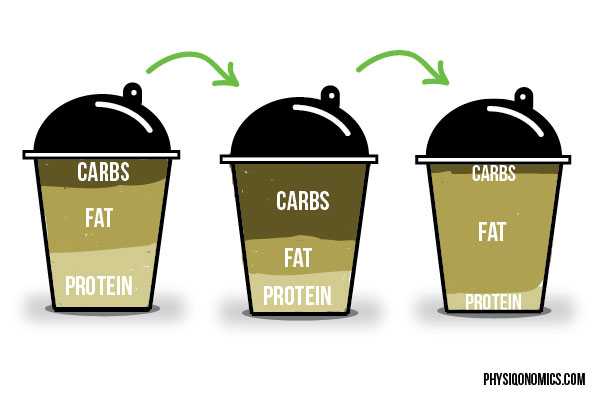
ALL of the obese patients lost weight at a constant rate, regardless of the nutrient composition of the diet; whether fat or carbohydrate intake was high or low – what mattered was the total calorie deficit.
The title of the study was eponymous to the findings: Calories Do Count. 30
A similar experiment was done in 2009, with researchers concluding 31:
Interestingly, when several popular diets are analysed they all, in one way or another, abide by certain ‘healthy patterns’. Summed up in the table below. 32
Yh, but hormones…
There’s a popular idea perpetuated in the mainstream media that people gain fat because of a hormonal imbalance and not because of a calorie imbalance.
The problem with this idea, barring wanting to rip my eyes out, is they have it backwards. Do hormones impact body composition? Of course they do, and anyone who says otherwise doesn’t know what they’re talking about. However, hormones are influenced by calorie intake and not vice versa.
If you eat fewer calories than your body requires (a calorie deficit) or more than your body requires (a calorie surplus) hormones like leptin, cortisol, insulin, thyroid, testosterone are all affected to some degree.
The Tangential Black Box:
1. Endocrinology is super complicated and everything works in tandem; it’s not as simple as blaming an individual hormone.
2. Insulin and leptin are considered ‘master hormones’, meaning they tend to influence a bunch of other stuff, and guess what they respond to? Yep. Calorie intake. 33
If you eat in a calorie deficit: leptin and thyroid hormone drops. This, in turn, means you expend fewer calories and are hungrier. Extended periods of low calorie dieting can decrease testosterone levels and increase cortisol, leading to muscle loss and lowered libido. All of this in an attempt to stop you from ostensibly starving to death.
Conversely, if you eat in a calorie surplus: leptin levels increase, T3 returns back to baseline, hunger decreases — energy levels increase, you start moving more and expending more energy –, testosterone increases, and cortisol drops.
The Black Box of Gosh darn it, I forgot to mention this:
On testosterone decrease in a deficit: this depends on your levels of body fat. Someone who is overweight will see increases in testosterone levels when they lose fat, compared with someone dieting down to extremely low levels of body fat for a competition. Similarly, insulin sensitivity increases with fat loss and decreases with fat gain. Again, this is predicated on energy (im)balance.
So, the next time someone says something about hormones and fat gain, dragon punch them in the neck.
What’s a dragon punch? Oh, my bad. It’s when this happens:
And then you do this.
It’s not as simple as calories in and calories out: but track your calories anyway.
Yes, it’s not as simple as calories in and calories out. Yes, the human body is a lot more complex than a cute sounding maxim. But, despite all of that, you should be paying attention to your calorie intake for a number of reasons I’m about to list in an easy to digest bullet-point format.
- Training Wheels For Your Nutrition
Calorie tracking is ‘training wheels’ for your nutrition. It teaches you about food. When you’ve tracked for a while you learn what foods are high in carbs, protein, fats; what foods are good sources of key vitamins and minerals, and fibre; you learn how many calories are in your favourite restaurant foods. You learn what actual portion sizes look like and you stop falling victim to mental errors like the health halo effect of food.
Soon, you may not need to track as you’ll know enough to eat without using a calorie tracking app. But, to get to that point you first need to learn all of this stuff, and that’s what tracking your food intake does.
-
The Obesogenic Environment
We’re living in an ‘eat more and keep eating’ environment. In this obesogenic environment, high-calorie food is everywhere, easy to access, and when it isn’t, you can be sure there’s an advert reminding you.
These hyper-palatable foods are easy to overeat while concomitantly providing a large number of calories. And as long as you reside in this environment, which isn’t going anywhere, your chances of gaining fat or having trouble losing fat will remain. You can’t rely on your “intuition”, or eat according to your natural hunger and satiety cues – not at the start, anyway – because the environment doesn’t allow for that.
The best way to combat this is to have some semblance of calorie awareness and control.
-
Self-monitoring and Weight Loss
In a number of studies, individuals who self-monitor their calorie intake lose weight more effectively than those who don’t.
In one study: Individuals who were successful at reaching their 5% weight loss goal during the intervention self-monitored more than twice as often (81 days of self-monitoring) as individuals who were not successful at meeting the 5% goal (35 days of self-monitoring). 35
In this review, all of the 15 studies that focused on dietary self-monitoring found significant associations between self-monitoring and weight loss.
And here are like a gazillion other studies showing the same thing (1, 2, 3, 4, 5). Calorie awareness is also a key behaviour trait of those who have lost weight and kept it off for more than 5 years. 36
-
Makes the Impalpable Palpable
People are terrible at reporting food intake and studies that have shown this over and over and over and over and over, over, over, over again…and again, because nobody knows how many calories are in foods and that’s where the utility in calorie trackers lies – they make the impalpable palpable.
If someone is overeating – the archetypal “I’m hardly eating and I just can’t lose weight!” – and you have them track calories, all of a sudden, “Oh my god, I can’t believe I was eating that much.” (The reverse for the self-proclaimed hard-gainer).
The calorie tracker quantified the previously unknown.
Accuracy isn’t the point. Tracking food intake provides constraints and gives you a tangible baseline to work from. Once you have a baseline you can make adjustments as you go along. It’s better to be off by 20% but make progress than be off 100% and not make any progress.
• Autonomy
Having a choice in how and what you eat frees you from the shackles of the fad diet industry. You no longer need to eat a certain way and hate your life doing it because some guru on the internet told you. You get to decide, and this is perhaps the biggest factor in achieving and maintaining fat loss in the long run: eating in a way that fits you psychologically, sociologically, and physiologically.
The Black Box That’s Going to make you very angry:
Honestly: if you’re one of those people wanting to improve their body composition and health, but you don’t want to track because you think it’s tedious or laborious but you can spend hours binge-watching a Netflix series then, seriously, stop complaining about your weight because if you aren’t going to take responsibility for your own stuff that’s on you.
Last year, Greg Nuckols wrote an article titled, Training and Diet are Simple Because Your Body is Complex.
And that’s the point I want to end on: the human body is infinitely complex (just read Greg’s article to see what I mean), there are things – a lot of things – we still don’t know, and probably won’t ever know. But. What we do currently know is sufficient enough for us to implement and make progress with.
Sure, calories in and calories out might not be perfect – but it works because it’s good enough.
DON’T BE A LAME ASSMONKEY – SHARE | COMMENT
Footnotes
All the things I couldn’t fit into the main article or other points of interest is provided here.
1. The Calorie: A (very abbreviated) Origin Story sources:
- A Short History of Nutritional Science (there are like 4 parts, enjoy)
- History of the calorie in nutrition
- Why Calories Count, Marion Nestle
- Does the history of food energy units suggest a solution to “Calorie confusion”?
2. Here’s a video and an article showing how modern day metabolism research is conducted.
3. Who actually invented the term ‘calorie’ is unknown. As James Hargrove said, “We all teach this unit, and nobody knows where it came from, not even the historians of nutrition.” While some claim it was Nicolas Clement, he never used the word ‘calorie’ in any of his published writings, only in his notes. Since Favre used the term calorie in his published work, it’s generally associated with him, however, there’s evidence that the word calorie was being used as far back as 1824 as a unit of heat.


